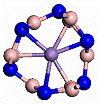Department of Physics and Astronomy: Publications and Other Research

Stephen Ducharme Publications
Document Type
Article
Date of this Version
5-2016
Citation
Scientific Reports 6, 25087(8) (2016).
doi: 10.1038/srep25087
Abstract
A charge gradient microscopy (CGM) probe was used to collect surface screening charges on poly(vinylidene fluoride-trifluoroethylene) [P(VDF-TrFE)] thin films. These charges are naturally formed on unscreened ferroelectric domains in ambient condition. The CGM data were used to map the local electric current originating from the collected surface charges on the poled ferroelectric domains in the P(VDF-TrFE) thin films. Both the direction and amount of the collected current were controlled by changing the polarity and area of the poled domains. The endurance of charge collection by rubbing the CGM tip on the polymer film was limited to 20 scan cycles, after which the current reduced to almost zero. This degradation was attributed to the increase of the chemical bonding strength between the external screening charges and the polarization charges. Once this degradation mechanism is mitigated, the CGM technique can be applied to efficient energy harvesting devices using polymer ferroelectrics.


Comments
This document is a US government work and is not subject to copyright in the United States.
Published by Nature Publishing Group.